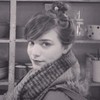Seattle is "broverwhelmed." Between the tech industry and the real estate developers catering to upscale tastes of the increasingly privileged class, Seattle is experiencing a new era of gentrification, one that doesn't just bulldoze low income apartment buildings but is also wiping out traditional gayborhoods. Tech bros are clambering up the latest high rises, filling local bars that were formerly queer-oriented, sparking a clash with long time queer residents. In the last few years, there's been a sudden uptick of hate crimes directed at queer people in the historically gay neighborhood of Capitol Hill.
Advertisement
The bro-led takeover of Capitol Hill was consummated when brands started advertising directly to this new, lily-white and cash rich demographic. Jägermeister ads plaster walls and sidewalks encouraging passersby to: "Relive the Night: You Became Legends on Cap Hill."Lifetime Seattle resident, Nilda Brooklyn, is taking a new approach to combat the erasure of queer space by partnering with her friends, photographer Adrien Leavitt, and creative consultant and web designer, Ava Cole, on a project called In This Place: [206]. Brooklyn and her partners are using photography and wheat pasting to tell a particular story of older gay women identities that converged on "the Hill" before gentrification's latest effects. I had the opportunity to talk with Nilda and Adrien about the project, which has so far culminated in nine portraits of openly aging queer women at the corners of streets that each had identified as being formative to their lives in Seattle. These portraits are accompanied by answers to just three questions: their name, how they identify, where they live on Capitol Hill, and why. Like JD Samson pointed out in his micro documentary for Broadly, lesbian bars created spaces for cross-generational contact; In This Place: [206] attempts to do the same.
"Moosie" by Adrien Leavitt
"It's my reaction and stress to what I see of my changing home town," Brooklyn says. "It requires active engagement. It requires agency." The project is part street art and part online presence, with a #inthisplace206 tag that can be adapted to other cities' phone area codes, such as Portland's #inthisplace503.
Advertisement
The idea came from Brooklyn visiting her biological mom, who retired and moved from Seattle to Montana in a place she's nicknamed "Butch Valley" where many lesbian "ex-pats" have retired. "It's cool just to meet older queer women out there. I find that as much as I like meeting older queer women, they really enjoy meeting me," Brooklyn says.Being queer and aging is the crux of the story Brooklyn and Leavitt are trying to tell: many queers do not have traditional families for cross-generational interactions, and gentrification further severs ties to informal but historic queer sites in the city. "[Young queers] don't get to see how we age in the same way because we don't have people we can look to and see models of that," Leavitt says. "It was really powerful for me to get to see models of that." In This Place: [206] attempts to make invisible aging queers in Seattle visible; models of aging and longevity without the price tag of Capitol Hill living.
With aging comes death, and for Brooklyn, death of a loved member of the community can be transformative. In recounting a funeral of a queer family member, Brooklyn recalls, "all of [those attending the funeral] were kind of older, queer women and men just telling stories. I felt privileged just to be there and I wanted to share that with the people in my life that make my life queer. I want to create that bridge, and I know that comes through me building those relationships or me doing work around it."Wheat pasting photos of aging queers in a specific public place opens the door for something different from news coverage of an object or memorializing in a museum. While some passersby may assume that the queers have already "left," Brooklyn and Leavitt insist that queers are still there—and will continue to be. "This project is not meant to be something like, 'what's happening to our older queer women?! They're just disappearing! Stop everything!'," Brooklyn says. "It's not. It's just that this is happening there and it's also happening here, in this community. So I like the idea that it's on the street and it's a little bit disposable because the story of gentrification is a little bit disposable, you know? It's multiplied, and it's happening, and we're in it, and we're active in it."
"Bryer" by Adrien Leavitt
In the spirit of this disposability, I asked Brooklyn and Leavitt about what it is like to see the portraits torn down or defaced. "It fits the theme that place can be temporary and subject to change, and that you may walk past the image that looks perfect one day, but over time it fades and wears, and it will eventually be gone," Brooklyn muses. "I think that is conceptually the entire thing." Preservation becomes less about seeing something as bygone, but seeing the potential in being in flux, of remembering in order to start a conversation that insists that something is always there, perhaps especially because it was taken out. As Brooklyn says, "This plays to the idea that you may paint over me, but I'm still here, even with the degradation or the graffiti, which I love! I love how people riffed off of it, because I felt like it is a conversation…any time I would see it, I would take a photo again."The subjects of the photos plastered around town are nine women who are connected to Brooklyn. They are queer women who have been priced out of and bro'd out of their physical spaces and night lives. "It's totally replicable. It's not complicated. It's speaking about a particular place here, but it's also talking about a very real, national reality of almost all cities. Maybe just a reality of cities in general."
